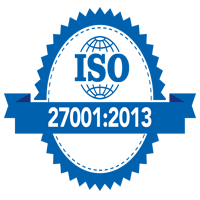If your company is still hiring through traditional recruitment methods and facing difficulty in retaining talent. Then it’s a wake-up call to shift to new ways of hiring. In today’s digital world, data is considered the lifeblood of organizations. Just like more and more industries have realized the potential of data, similarly, the recruiting industry can also utilize data for better decision-making and to recruit and retain talent.
Recruiting talent does not merely involve just collecting data but a deep HR analysis. It means transforming HR data into meaningful HR insights to gain a competitive advantage to derive better results.
Being aware of the benefits of HR analytics, you must be wondering how to leverage HR analytics to retain the best talent and improve the hiring process. We got you covered. In this blog, will be revealing the top 5 ways for leveraging HR analytics-
Conducting Skill Gap Analysis to Identify Workforce Needs
Skill gap analysis helps the HR team identify current employees’ competencies and what is expected. HR analytics plays a crucial role in determining a skill gap by aggregating data from various sources. It facilitates identifying the strengths and weaknesses of the workforce by leveraging predictive analytics. Thus, it helps in pinpointing skill gaps by comparing current capabilities with future needs. The insights gained enable the strategizing of targeted training programs, strategic workforce planning, and ultimately enhancing employee engagement and retention.
Accessing Early-Stage Employee Turnover
It’s often challenging to determine whether newly hired employees will stay with the company for an extended period. However, with HR data analytics, this issue can be tackled as HR teams can gain valuable insights into early employee turnover, helping to predict and enhance new hire retention. This helps the HR team in analyzing and finding the reasons for it and thus adopting improvement solutions. For instance, reasons for high employee turnover could be less offer acceptance from candidates, not getting adequate support to new hires and their feedback, and so on. Based on these insights gained from HR analytics, organizations can implement targeted actions to reduce early employee turnover.
Helps in Attracting Top Talent by Depicting a Positive Company Culture
Today, positive company culture is the most influencing factor in attracting top talent, even surpassing salary considerations for many. However, every company claims to have a great company culture. But whom to trust? Making it hard for potential employees to determine the right cultural fit. In such a scenario, HR analytics can help in differentiating between claims and genuine cultural alignment. Through surveys and feedback mechanisms, HR analytics can measure employee engagement and involvement. Metrics such as high retention rates and employee participation can be tracked and showcased. This helps potential hires to get the real picture of company culture backed with HR analytics.
Analyzing Data from Pre-Hire Assessments
To ensure that candidates’ skills are rightly matched with the job description and requirements, HR analytics is of great help. It enables the identification of the most essential skills for a candidate’s success in the job. The HR team can leverage analytics for the pre-hire assessment of candidates and foster a data-driven culture by analyzing large datasets. Thus, the hiring department can set standards for screening candidates and subsequent performance benchmarks. This ensures that only those candidates are selected and screened that meet these benchmarks in the hiring process.
Minimized Hiring Time
Hiring is a time-consuming process and on top of that, its candidate leaves immediately after the hiring, creating frustration among the HR department. In such a scenario, there is a requirement for a robust solution cam can minimize the hiring time without affecting the quality of the hire. HR analytics aids in saving time by screening candidates based on predefined criteria such as required skills, experience, and the right qualifications. This helps recruiters in saving time otherwise reviewing resumes manually. For instance, through HR analytics, it can be identified which job boards have higher success rates, allowing them to focus on those channels and save time.
Final Words
Utilization of HR analytics is transforming the way HR departments use to hire as it holds enough capacity to minimize hiring process hurdles. It’s a handy tool that can create wonders by providing data-oriented insights that enable smarter, more informed hiring decisions to streamline the recruitment process.
We at Canopus Infosystems understand the urgency of hiring quality candidates and leverage HR analytics to efficiently identify top talent. Our data-driven approach ensures a faster and more accurate recruitment process, helping you find the right candidates effectively. Let us assist you in optimizing your hiring strategy to derive better results.
3 mins read

















